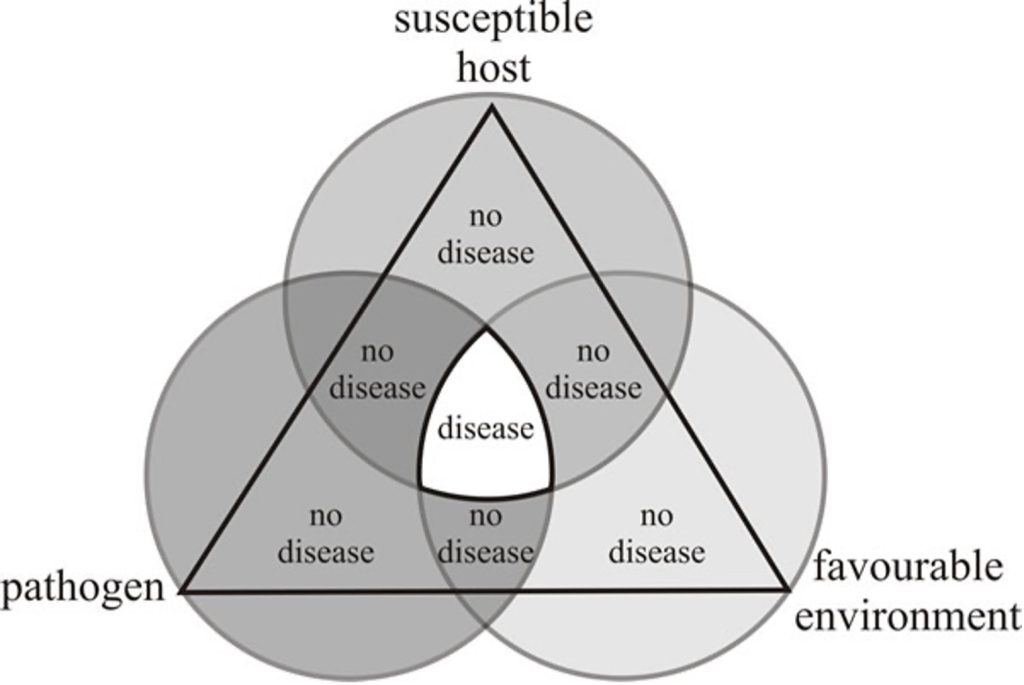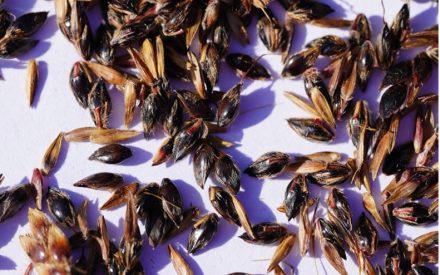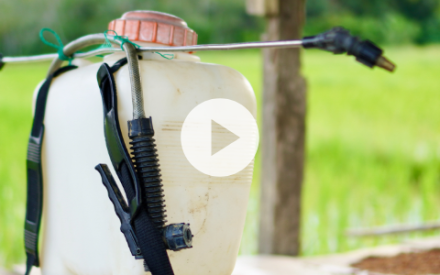Do not apply fungicides if there is no evidence of disease
Foliar diseases will be less common in a dry year. Do not apply fungicides to maintain plant health in absence of diseases. Prophylactic applications of pesticides increase the odds of developing resistance to the product applied. If conditions are not conducive to fungal growth, you will not get a return on applying fungicides. Think about fungal diseases as a three-legged stool or a triangle. Each leg on the stool or side of the triangle is another factor in determining if the plant will be infected with a disease. Eliminate one of the points or legs and the stool collapses disease does not result.

Host, pathogen, and environment determine if disease will emerge
First, you need to have a host for the pathogen to infect. The host is the crop we planted. We can select varieties that are partially resistant to a disease and reduce the length of the host side of the triangle. The pathogen is an infectious agent. Crop rotation can help reduce the amount of pathogen in a field, but in most cases, pathogens are difficult to control as spores can move on wind currents from long distances away. The environment is the most important side of the triangle. Many plant pathogens need plant leaves and plant parts to be wet for part of the day. Heavy dew or rainy days will provide an environment conducive to pathogen growth. So far, in June 2023, we have not had an environment friendly to pathogen dissemination, infection, or growth due to dry conditions.

Only apply fungicides if a favorable disease environment is present
Fungicides are not effective for more than a few weeks. Fungicides applied during dry weather may not be effective by the time the critical growth stage for protection arrives. Be patient and watch the weather. Until we get to more rainy and humid conditions, plant disease is going to be the least of your concerns.
Resist the temptation to apply fungicides to reduce plant and drought stress. While some fungicide active ingredients can have physiological effects on the plant, university research has demonstrated that the economics of applying fungicide during drought result in little positive return of investment. The beneficial effect the fungicide active ingredient might have on the host plant are small and rarely result in an effect large enough in yield to offset the cost of the fungicide treatment.
If you would like to learn more about how fungicide works and how to best use fungicides on your farm, check out the web book on fungicides produced by the Crop Protection Network at https://cropprotectionnetwork.org/web-books/fungicide-use-in-field-crops.
Tools to track and predict disease
Tarspotter
Tarspotter (https://ipcm.wisc.edu/apps/tarspotter/) is a mobile device application developped by the Nutrient and Pest Management Program at UW-Madison to predict the liklihood of an increase in tar spot in corn. Using the field location, recent weather data and your prefered action threshold, this app predicts the level of risk of findining tar spot. Using the app can alert growers to the potential for tar spot development and allow them to respond with field scouting and perhaps fungicide applications. You can find Tarspotter in your app store and can be downloaded on your phone for free.
Sporecaster
Sporecaster (https://ipcm.wisc.edu/apps/sporecaster/)is another mobile device app developed by the Nutrient and Pest Management Program at UW-Madison to predict the likelihood of the white mold pathogen to infect soybeans. Sporecaster uses the field location, recent weather data, row-spacing, and irrigation status to determine the liklihood of white mold pathogen presence in a field with the history of the disease. The best time to use the Sporecaster app is during the R1 -R3 growth stages in soybeans. The R1 growth stage of soybeans is one or more flowers present at the first node on the soybean stem. You can find Sporecaster in your app store and can be downloaded on your phone for free.

 ▶ Combine Cleaning: A Simple Step to Reduce Weed Seed Dispersal
▶ Combine Cleaning: A Simple Step to Reduce Weed Seed Dispersal Johnsongrass in Wisconsin
Johnsongrass in Wisconsin ▶ Backpack Sprayers in Diversified Vegetable Systems
▶ Backpack Sprayers in Diversified Vegetable Systems ▶ AI in Agriculture
▶ AI in Agriculture


